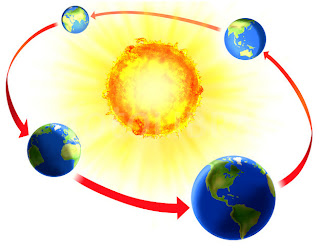From space the Earth looks blue, white and brown. There are 4 parts
- the atmosphere is the air that surrounds the Earth.
Air is mainly nitrogen and oxigen. There are also small quantities of carbon dioxide, ozone and water vapour.
The atmosphere has got layers:
|
- the hydrosphere is the water on Earth (oceans, lakes, rivers, ice and snow in the poles and mountains)
The water cycle
It is the constant circulation of water between the sea, the atmosphere and land.
- Water evaporates because of heat from the Sun. It becomes water vapour.
- Water vapour rises and condenses into drops of water. The water drops form clouds.
- Water falls from clouds as rain: precipitation. When it is very cold, water solidifies and falls as snow.
- Water flows over the land and filters into it. It forms rivers and lakes.
- The water returns to the sea or evaporates. The water cycle starts again.
- the biosphere is all the living things on Earth.
- the geosphere or lithosphere is the ball of rock. It has 3 layers
- The crust is made up of solid materials: rocks. Rocks are made up of minerals.
- The mantle is very hot. In some parts there is magma.
- The core is extremely hot.
ACTIVITIES





















